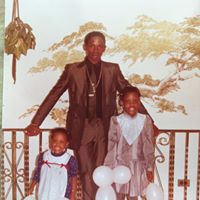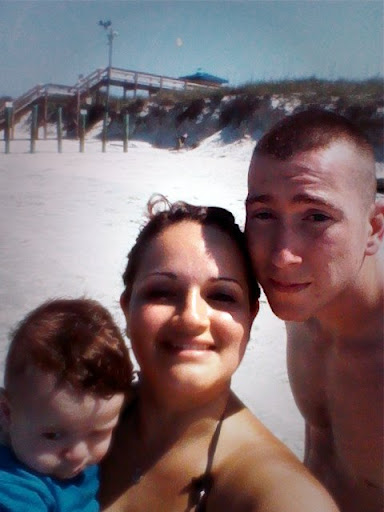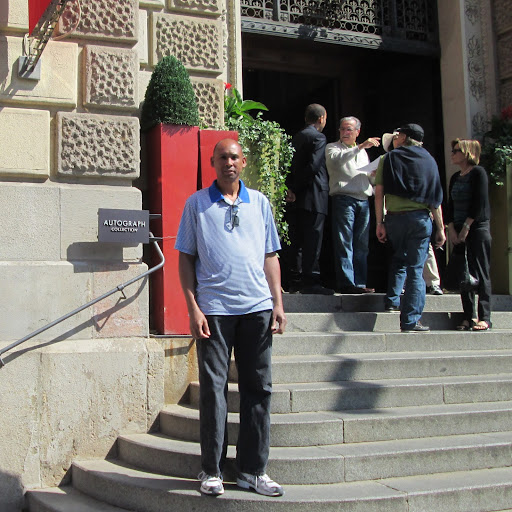Jeffrey T Cole
age ~41
from Lake Stevens, WA
- Also known as:
-
- Jeffrey Thomas Cole
- Jeff T Cole
- Jefft Cole
- Jr Cole
- Cole Jr
Jeffrey Cole Phones & Addresses
- Lake Stevens, WA
- Kuna, ID
- Canyon Country, CA
- 2435 Mirage Dr, Colorado Spgs, CO 80920 • 7193620587
- Colorado Springs, CO
- Pasadena, CA
Work
-
Company:BoeingApr 2013
-
Position:Industrial waste water operator
Education
-
School / High School:Highline Community College- Sacramento, CASep 2008
-
Specialities:Management
Ranks
-
Licence:New York - Currently registered
-
Date:1991
Lawyers & Attorneys

Jeffrey Harley Andrew Cole - Lawyer
view sourceAddress:
Turtle Creek Asset Management Inc.
4163063025 (Office)
4163063025 (Office)
Licenses:
New York - Currently registered 1991
Education:
University of Toronto Faculty of Law

Jeffrey Cole - Lawyer
view sourceOffice:
Jeffrey J. Cole Attorney at Law
Specialties:
Civil Litigation
Unemployment Compensation
Zoning Law
Land Use
Real Estate
General Practice
Unemployment Compensation
Zoning Law
Land Use
Real Estate
General Practice
ISLN:
900102354
Admitted:
1994
University:
Pennsylvania State University, B.A., 1991
Law School:
Dickinson School of Law, J.D., 1994

Jeffrey Cole - Lawyer
view sourceOffice:
Plauché Smith & Nieset, LLC
Specialties:
Workers Compensation
Personal Injury
Insurance Defense
Property and Casualty Law
Toxic Torts
Products Liability
Appeals
Litigation
Personal Injury
Insurance Defense
Property and Casualty Law
Toxic Torts
Products Liability
Appeals
Litigation
ISLN:
908286100
Admitted:
1980
University:
Louisiana State University, B.A., 1976
Law School:
Louisiana State University, J.D., 1979

Jeffrey Cole - Lawyer
view sourceOffice:
Harman, Claytor, Corrigan & Wellman A Professional Corporation
Specialties:
Litigation
Insurance
Torts
Insurance
Torts
ISLN:
917207523
Admitted:
1982
University:
Connecticut College, B.A., 1977
Law School:
University of Pittsburgh, J.D., 1982

Jeffrey Cole - Lawyer
view sourceSpecialties:
Tax
Mergers and Acquisitions
Mergers and Acquisitions
ISLN:
908286117
Admitted:
1973
University:
Pennsylvania State University, B.S., 1967
Law School:
Fordham University School of Law, J.D., 1972; New York University School of Law, LL.M., 1977

Jeffrey Cole - Lawyer
view sourceSpecialties:
Litigation
ISLN:
908286124
Admitted:
1979
University:
University of Illinois, B.A., 1976
Law School:
Harvard Law School, J.D., 1979
Name / Title
Company / Classification
Phones & Addresses
Ballard Dental Care
Dentists
Dentists
6111 15Th Ave NW, Seattle, WA 98107
President
Cole Carpet Specialists Inc
Carpet & Rug Cleaners. Water Damage Restoration. Fire Damage Restoration. Fire & Water Damage Restoration. Carpet & Rug Repair
Carpet & Rug Cleaners. Water Damage Restoration. Fire Damage Restoration. Fire & Water Damage Restoration. Carpet & Rug Repair
PO Box 398, Snohomish, WA 98291
3605682522
3605682522
President
Leibsohn & Co
Real Estate Agents and Managers
Real Estate Agents and Managers
40 Lake Bellevue Dr # 270, Bellevue, WA 98005
President
Northern Home Improvements, Inc
Painting/Paper Hanging Contractor
Painting/Paper Hanging Contractor
2291 Waynoka Rd, Colorado Springs, CO 80915
110 E Cheyenne Rd, Colorado Springs, CO 80906
7195912446
110 E Cheyenne Rd, Colorado Springs, CO 80906
7195912446
Principal
Jlk Technologies LLC
Business Services at Non-Commercial Site
Business Services at Non-Commercial Site
4465 Bays Water Dr, Colorado Springs, CO 80920
Sales & Marketing Staff
Bfi Waste Systems of North America, Inc
Refuse System
Refuse System
9200 Glenoaks Blvd, Shadow Hills, CA 91352
3233211722
3233211722
Cargosheep.Com LLC
On Line Retail
On Line Retail
5813 Washington Blvd, Los Angeles, CA 90232
81 Newtown Ln, East Hampton, NY 11937
81 Newtown Ln, East Hampton, NY 11937
SPEED LIMIT EXPRESS LLC
Resumes

Jeffrey Cole Seattle, WA
view sourceWork:
Boeing
Apr 2013 to 2000
Industrial Waste Water Operator Boeing
Auburn, WA
Mar 2011 to Mar 2013
Environmental Control Technician Hytek Finishes/ Estherline
Kent, WA
Sep 2009 to Mar 2010
Chemical Maintenance Technician Genie Industries
Redmond, WA
May 2006 to Jul 2008
Environmental Health and Safety Specialist Boeing
Redmond, WA
Jul 1998 to May 2006
Waste Water Operator TCB Industrial
Seattle, WA
Aug 1995 to Jul 1998
Environmental Technician John Manville
Kent, WA
Mar 1996 to Apr 1997
Compounder Northwest Enviro Services
Seattle, WA
Jan 1990 to Oct 1994
Environmental Technician WDS Inc
Seattle, WA
Apr 1989 to Jan 1990
Drywall Hanger (Apprentice) U.S. Army
Nov 1984 to Nov 1988
Water Treatment Specialist
Apr 2013 to 2000
Industrial Waste Water Operator Boeing
Auburn, WA
Mar 2011 to Mar 2013
Environmental Control Technician Hytek Finishes/ Estherline
Kent, WA
Sep 2009 to Mar 2010
Chemical Maintenance Technician Genie Industries
Redmond, WA
May 2006 to Jul 2008
Environmental Health and Safety Specialist Boeing
Redmond, WA
Jul 1998 to May 2006
Waste Water Operator TCB Industrial
Seattle, WA
Aug 1995 to Jul 1998
Environmental Technician John Manville
Kent, WA
Mar 1996 to Apr 1997
Compounder Northwest Enviro Services
Seattle, WA
Jan 1990 to Oct 1994
Environmental Technician WDS Inc
Seattle, WA
Apr 1989 to Jan 1990
Drywall Hanger (Apprentice) U.S. Army
Nov 1984 to Nov 1988
Water Treatment Specialist
Education:
Highline Community College
Sacramento, CA
Sep 2008 to Dec 2008
Management Renton Technical College
Renton, WA
Jan 1990 to Feb 1990 Quartermaster School
Fort Lee, VA
Jan 1985 to Mar 1985
Vocational in Course Petersburg High School
Petersburg, VA
Aug 1981 to Jun 1984
Sacramento, CA
Sep 2008 to Dec 2008
Management Renton Technical College
Renton, WA
Jan 1990 to Feb 1990 Quartermaster School
Fort Lee, VA
Jan 1985 to Mar 1985
Vocational in Course Petersburg High School
Petersburg, VA
Aug 1981 to Jun 1984
Isbn (Books And Publications)




The Potosi Mita, 1573-1700: Compulsory Indian Labor in the Andes
view sourceAuthor
Jeffrey Cole
ISBN #
0804712565

Dirty Work: Immigrant in Domestic Service, Agriculture, and Prostitution in Sicily
view sourceAuthor
Jeffrey Cole
ISBN #
0739117238

License Records
Jeffrey Alan Cole
License #:
E-5821 - Expired
Category:
Engineering Intern
Medicine Doctors

Jeffrey L. Cole
view sourceSpecialties:
Physical Medicine & Rehabilitation
Work:
Kessler Institute For RehabKessler Institute For Rehabilitation
1199 Pleasant Vly Way FL 1, West Orange, NJ 07052
9737313600 (phone), 9732436861 (fax)
Jeffrey L Cole MD
10615 Queens Blvd STE 3, Forest Hills, NY 11375
7182616366 (phone), 7182633427 (fax)
1199 Pleasant Vly Way FL 1, West Orange, NJ 07052
9737313600 (phone), 9732436861 (fax)
Jeffrey L Cole MD
10615 Queens Blvd STE 3, Forest Hills, NY 11375
7182616366 (phone), 7182633427 (fax)
Education:
Medical School
Universidad Autu00F3noma de Guadalajara, Guadalajara, Jalisco, Mexico
Graduated: 1977
Universidad Autu00F3noma de Guadalajara, Guadalajara, Jalisco, Mexico
Graduated: 1977
Procedures:
Arthrocentesis
Hearing Evaluation
Neurological Testing
Hearing Evaluation
Neurological Testing
Conditions:
Migraine Headache
Osteoarthritis
Peripheral Nerve Disorders
Rotator Cuff Syndrome and Allied Disorders
Tempromandibular Joint Disorders (TMJ)
Osteoarthritis
Peripheral Nerve Disorders
Rotator Cuff Syndrome and Allied Disorders
Tempromandibular Joint Disorders (TMJ)
Languages:
English
Spanish
Spanish
Description:
Dr. Cole graduated from the Universidad Autu00F3noma de Guadalajara, Guadalajara, Jalisco, Mexico in 1977. He works in Forest Hills, NY and 1 other location and specializes in Physical Medicine & Rehabilitation. Dr. Cole is affiliated with Kessler Institute For Rehabilitation.

Jeffrey F. Cole
view sourceSpecialties:
Cardiovascular Disease
Work:
Maryland Cardiovascular Specialist
3407 Wilkens Ave STE 300, Baltimore, MD 21229
4106445111 (phone), 4106442715 (fax)
3407 Wilkens Ave STE 300, Baltimore, MD 21229
4106445111 (phone), 4106442715 (fax)
Education:
Medical School
University of Pennsylvania School of Medicine
Graduated: 1975
University of Pennsylvania School of Medicine
Graduated: 1975
Procedures:
Angioplasty
Cardiac Stress Test
Cardioversion
Continuous EKG
Echocardiogram
Electrocardiogram (EKG or ECG)
Pacemaker and Defibrillator Procedures
Cardiac Stress Test
Cardioversion
Continuous EKG
Echocardiogram
Electrocardiogram (EKG or ECG)
Pacemaker and Defibrillator Procedures
Conditions:
Aortic Valvular Disease
Cardiac Arrhythmia
Cardiomyopathy
Ischemic Heart Disease
Mitral Valvular Disease
Cardiac Arrhythmia
Cardiomyopathy
Ischemic Heart Disease
Mitral Valvular Disease
Languages:
English
Spanish
Spanish
Description:
Dr. Cole graduated from the University of Pennsylvania School of Medicine in 1975. He works in Baltimore, MD and specializes in Cardiovascular Disease. Dr. Cole is affiliated with Medstar Union Memorial Hospital, Saint Agnes Hospital, University Of Maryland Saint Joseph Medical Center and University Of Maryland Upper Chesapeake Medical Center.

Jeffrey R. Cole
view sourceSpecialties:
General Surgery
Work:
Thompson Surgical Associates
317 Medical Ctr Dr SW, Fort Payne, AL 35968
2568453336 (phone), 2568453686 (fax)
317 Medical Ctr Dr SW, Fort Payne, AL 35968
2568453336 (phone), 2568453686 (fax)
Education:
Medical School
University of Alabama School of Medicine
Graduated: 2004
University of Alabama School of Medicine
Graduated: 2004
Languages:
English
Description:
Dr. Cole graduated from the University of Alabama School of Medicine in 2004. He works in Fort Payne, AL and specializes in General Surgery. Dr. Cole is affiliated with De Kalb Regional Medical Center.

Jeffrey Brent Cole
view sourceSpecialties:
Internal Medicine
Education:
Uniformed Services University (1992)

Jeffrey Randall Cole
view sourceSpecialties:
Surgery
Education:
University of Alabama at Birmingham (2004)
Wikipedia References

Jeffrey Cole
Us Patents
-
Self-Compacting Pattern Indexer: Storing, Indexing And Accessing Information In A Graph-Like Data Structure
view source -
US Patent:8065293, Nov 22, 2011
-
Filed:Oct 24, 2007
-
Appl. No.:11/923430
-
Inventors:Kunal Mukerjee - Redmond WA, US
Jeffrey Cole - Redmond WA, US
Brendan Meeder - Redmond WA, US -
Assignee:Microsoft Corporation - Redmond WA
-
International Classification:G06F 17/30
-
US Classification:707711, 707696, 707739, 707740, 707741, 707742, 707743, 707744, 707745, 707746, 707802
-
Abstract:An indexing system uses a graph-like data structure that clusters features indexes together. The minimum atomic value in the data structure is represented as a leaf node which is either a single feature index or a sequence of two or more feature indexes when a minimum sequence length is imposed. Root nodes are formed as clustered collections of leaf nodes and/or other root nodes. Context nodes are formed from root nodes that are associated with content that is being indexed. Links between a root node and other nodes each include a sequence order value that is used to maintain the sequencing order for feature indexes relative to the root node. The collection of nodes forms a graph-like data structure, where each context node is indexed according to the sequenced pattern of feature indexes. Clusters can be split, merged, and promoted to increase the efficiency in searching the data structure.
-
Tracking And Following Of Moving Objects By A Mobile Robot
view source -
US Patent:20120316680, Dec 13, 2012
-
Filed:Jun 13, 2011
-
Appl. No.:13/158465
-
Inventors:Jean Sebastien Fouillade - Redmond WA, US
Adrien Felon - Seattle WA, US
Jeffrey Cole - Seattle WA, US
Nathaniel T. Clinton - Sammamish WA, US
Russell Sanchez - Redmond WA, US
Francois Burianek - Kirkland WA, US
Malek M. Chalabi - Redmond WA, US
Harshavardhana Narayana Kikkeri - Bellevue WA, US -
Assignee:Microsoft Corporation - Redmond WA
-
International Classification:B25J 13/08
-
US Classification:700258, 901 1, 901 46
-
Abstract:A robot tracks objects using sensory data, and follows an object selected by a user. The object can be designated by a user from a set of objects recognized by the robot. The relative positions and orientations of the robot and object are determined. The position and orientation of the robot can be used so as to maintain a desired relationship between the object and the robot. Using the navigation system of the robot, during its movement, obstacles can be avoided. If the robot loses contact with the object being tracked, the robot can continue to navigate and search the environment until the object is reacquired.
-
Control Of Displayed Content In Virtual Environments
view source -
US Patent:20130342572, Dec 26, 2013
-
Filed:Jun 26, 2012
-
Appl. No.:13/533148
-
Inventors:Adam G. Poulos - Redmond WA, US
Stephen G. Latta - Seattle WA, US
Daniel J. McCulloch - Kirkland WA, US
Jeffrey Cole - Seattle WA, US -
International Classification:G09G 5/00
-
US Classification:345633
-
Abstract:A system and method are disclosed for controlling content displayed to a user in a virtual environment. The virtual environment may include virtual controls with which a user may interact using predefined gestures. Interacting with a virtual control may adjust an aspect of the displayed content, including for example one or more of fast forwarding of the content, rewinding of the content, pausing of the content, stopping the content, changing a volume of content, recording the content, changing a brightness of the content, changing a contrast of the content and changing the content from a first still image to a second still image.
-
Self Learning Face Recognition Using Depth Based Tracking For Database Generation And Update
view source -
US Patent:20130343600, Dec 26, 2013
-
Filed:Jun 22, 2012
-
Appl. No.:13/530925
-
Inventors:Harshavardhana Narayana Kikkeri - Bellevue WA, US
Michael F. Koenig - Bellevue WA, US
Jeffrey Cole - Seattle WA, US -
Assignee:MICROSOFT CORPORATION - Redmond WA
-
International Classification:G06K 9/62
-
US Classification:382103
-
Abstract:Face recognition training database generation technique embodiments are presented that generally involve collecting characterizations of a person's face that are captured over time and as the person moves through an environment, to create a training database of facial characterizations for that person. As the facial characterizations are captured over time, they are will represent the person's face as viewed from various angles and distances, different resolutions, and under different environmental conditions (e.g., lighting and haze conditions). Further, over a long period of time where facial characterizations of a person are collected periodically, these characterizations can represent an evolution in the appearance of the person. This produces a rich training resource for use in face recognition systems. In addition, since a person's face recognition training database can be established before it is needed by a face recognition system, once employed, the training will be quicker.
-
Determining Coordinate Frames In A Dynamic Environment
view source -
US Patent:20170206668, Jul 20, 2017
-
Filed:Mar 30, 2017
-
Appl. No.:15/474687
-
Inventors:- Redmond WA, US
Arthur Tomlin - Kirkland WA, US
Tony Ambrus - Seattle WA, US
Jeffrey Cole - Seattle WA, US
Ian Douglas McIntyre - Redmond WA, US
Drew Steedly - Redmond WA, US
Frederik Schaffalitzky - Bellevue WA, US
Georg Klein - Seattle WA, US
Kathleen P. Mulcahy - Seattle WA, US -
Assignee:Microsoft Technology Licensing, LLC - Redmond WA
-
International Classification:G06T 7/246
G06T 19/00
G02B 27/01
G06T 7/60 -
Abstract:Embodiments are disclosed for methods and systems of distinguishing movements of features in a physical environment. For example, on a head-mounted display device, one embodiment of a method includes obtaining a representation of real-world features in two or more coordinate frames and obtaining motion data from one or more sensors external to the head-mounted display device. The method further includes distinguishing features in one coordinate frame from features in another coordinate frame based upon the motion data.
-
Determining Coordinate Frames In A Dynamic Environment
view source -
US Patent:20150317834, Nov 5, 2015
-
Filed:May 1, 2014
-
Appl. No.:14/267755
-
Inventors:Adam G. Poulos - Sammamish WA, US
Arthur Tomlin - Kirkland WA, US
Tony Ambrus - Seattle WA, US
Jeffrey Cole - Seattle WA, US
Ian Douglas McIntyre - Redmond WA, US
Drew Steedly - Redmond WA, US
Frederik Schaffalitzky - Bellevue WA, US
Georg Klein - Seattle WA, US
Kathleen P. Mulcahy - Seattle WA, US -
International Classification:G06T 19/00
G06K 9/46
G06K 9/00
G06K 9/62
G02B 27/01
G06T 7/20 -
Abstract:Embodiments are disclosed for methods and systems of distinguishing movements of features in a physical environment. For example, on a head-mounted display device, one embodiment of a method includes obtaining a representation of real-world features in two or more coordinate frames and obtaining motion data from one or more sensors external to the head-mounted display device. The method further includes distinguishing features in one coordinate frame from features in another coordinate frame based upon the motion data.
-
Face Recognition Using Depth Based Tracking
view source -
US Patent:20150092986, Apr 2, 2015
-
Filed:Oct 7, 2014
-
Appl. No.:14/507956
-
Inventors:Harshavardhana Narayana Kikkeri - Bellevue WA, US
Michael F. Koenig - Bellevue WA, US
Jeffrey Cole - Seattle WA, US -
Assignee:Microsoft Corporation - Redmond WA
-
International Classification:G06K 9/00
-
US Classification:382103
-
Abstract:Face recognition training database generation technique embodiments are presented that generally involve collecting characterizations of a person's face that are captured over time and as the person moves through an environment, to create a training database of facial characterizations for that person. As the facial characterizations are captured over time, they are will represent the person's face as viewed from various angles and distances, different resolutions, and under different environmental conditions (e.g., lighting and haze conditions). Further, over a long period of time where facial characterizations of a person are collected periodically, these characterizations can represent an evolution in the appearance of the person. This produces a rich training resource for use in face recognition systems. In addition, since a person's face recognition training database can be established before it is needed by a face recognition system, once employed, the training will be quicker.
-
Body-Locked Placement Of Augmented Reality Objects
view source -
US Patent:20140347390, Nov 27, 2014
-
Filed:May 22, 2013
-
Appl. No.:13/900416
-
Inventors:Adam G. Poulos - Sammamish WA, US
Tony Ambrus - Seattle WA, US
Jeffrey Cole - Seattle WA, US
Ian Douglas McIntyre - Redmond WA, US
Stephen Latta - Seattle WA, US
Peter Tobias Kinnebrew - Seattle WA, US
Nicholas Kamuda - Seattle WA, US
Robert Pengelly - Seattle WA, US
Jeffrey C. Fong - Seattle WA, US
Aaron Woo - Bellevue WA, US
Udiyan I. Padmanahan - Bellevue WA, US
Andrew Wyman MacDonald - Seattle WA, US
Olivia M. Janik - Seattle WA, US -
International Classification:G06T 19/00
-
US Classification:345633
-
Abstract:Embodiments are disclosed that relate to placing virtual objects in an augmented reality environment. For example, one disclosed embodiment provides a method comprising receiving sensor data comprising one or more of motion data, location data, and orientation data from one or more sensors located on a head-mounted display device, and based upon the motion data, determining a body-locking direction vector that is based upon an estimated direction in which a body of a user is facing. The method further comprises positioning a displayed virtual object based on the body-locking direction vector.

Jeffrey Cole Tapangan
view source
Jeffrey Mccalla Cole
view source
Jeffrey Cole Crusenberry
view source
Jeffrey Cole Smith
view source
Jeffrey TheVirgo Cole
view source
Jeffrey Divine Cole
view source
Jeffrey Cole
view source
Jeffrey J Cole
view sourceGoogleplus

Jeffrey Cole
Work:
Us army - 92F(gas pumper) (2010)
Education:
Marion military institute - Applied psycology
Tagline:
Goofy aint got nothing on me

Jeffrey Cole
Work:
A Good Egg Dining - Bartender (2007)
RED Primesteak - Head Bartender (2010)
RED Primesteak - Head Bartender (2010)
Tagline:
Distracted easily, on task usually, but excited mostly

Jeffrey Cole
Work:
US Navy - AS3

Jeffrey Cole
About:
N/A

Jeffrey Cole

Jeffrey Cole

Jeffrey Cole
About:
Team Leader at PepBoys Automotive

Jeffrey Cole
Flickr
Plaxo

Cole, Jeffrey
view sourceManchester, NH

Jeffrey Cole
view source
Jeffrey Cole
view sourceTampa, FLCOO at Hine Automation LLC Past: President at EMS, Engineer at Unaxis, Engineer at Advanced Plasma Systems

Jeffrey Alan Cole
view sourceSouth Florida

Jeffrey Cole
view sourceCDF

Cole, Jeffrey D
view sourceDIRECTV
Myspace

Jeffrey Cole
view sourceLocality:
i ask what she wanted and she said, Samoa
Gender:
Male
Birthday:
1948
Classmates

Jeffrey Ian Cole
view sourceSchools:
Pike High School Indianapolis IN 2001-2005
Community:
Joe Robertson

Jeffrey Cole
view sourceSchools:
Wayland Academy Beaver Dam WI 1973-1977
Community:
Stephanie Franklin, Pat Johnston, Jennifer Coonley

Jeffrey Cole
view sourceSchools:
Portland High School Portland MI 1978-1982
Community:
William Harmon

Jeffrey Cole
view sourceSchools:
Wooster School Danbury CT 1968-1972
Community:
Willie Boyd, Adrienne Lisko, Bob Binnie, David Thomas, Doug Farnsworth

Jeffrey Cole
view sourceSchools:
Berkeley Springs High School Berkeley Springs WV 2003-2007
Community:
Cherie Yost, Deborah Wilson

Jeffrey Cole (Rotton)
view sourceSchools:
Baldwin High School Baldwin MI 1978-1982, Addison High School Addison MI 1989-1992
Community:
Melissa Remmele, Diane Jarman, Danny Walters, Stacey Miley, Karen Quigley

Jeffrey Cole
view sourceSchools:
Niobrara County High School Lusk WY 1987-1991
Community:
Bob Ward, Dale Bostrom, Dianne Tuberville

Jeffrey Cole
view sourceSchools:
Lutheran High School San Diego CA 1981-1985, Cal Luthern High School La Mesa CA 1981-1985
Community:
Tammy Fischer, Charity Casey, Tracy Walch, Russell Smith
News

Billionaire doctor’s purchase of L.A. Times returns it to local control
view source- Jeffrey Cole, director of the Center for the Digital Future at the University of Southern California Annenberg School for Communication and Journalism, predicted that print newspapers would eventually die.
- Date: Jun 17, 2018
- Category: Headlines
- Source: Google
Youtube
Get Report for Jeffrey T Cole from Lake Stevens, WA, age ~41













